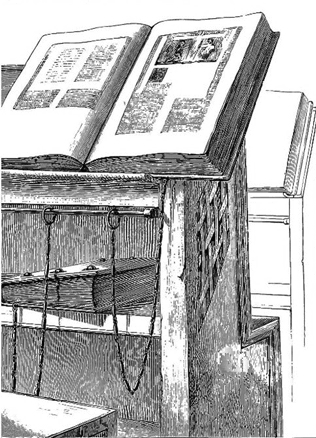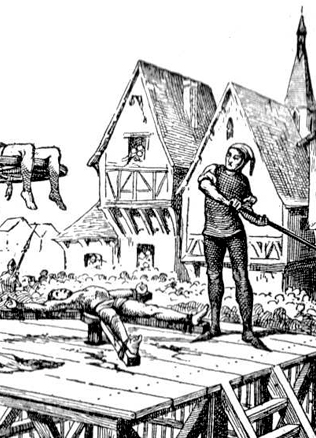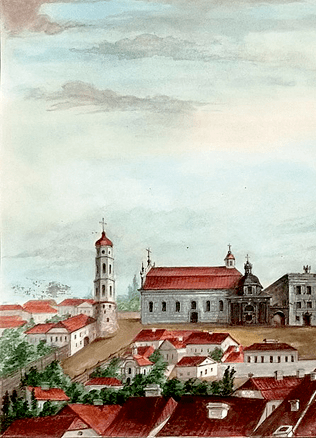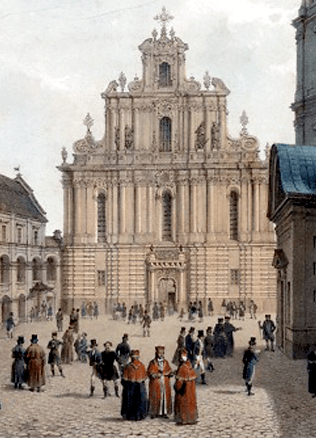Andrius Rimša Lietuvis and a “Democratic” Model of a Heroic Poem
Andrius Rimša Lietuvis (Lat. Andreas Rymsza Lituanus, Pol. Andrzej Rymsza Litwin; 1550 – 1595) is regarded as one of the most interesting poets of the Renaissance in the Grand Duchy of Lithuania, not yet sufficiently known and appreciated. Biographical knowledge about him is scarce. Andrius Rimša was born in the family of Orthodox nobility, in the village of Penchin, near the town of Baranavichi, Novgorod province. As a boy, he went to Ostrog school, established by Konstanty Ostrogski (1526–1608), son of the Great Hetmon of Lithuania Konstanty Ostrogski, who secured a victory during the Orsha Battle. When at school, he was taught ecclesiastical Russian, ancient Greek and Latin languages. The school also boasted a printing-house, in which the famous Ivan Fiodorov, a pioneer of Russian and Ukrainian press was working at the time, having been forced to flee from Moscow. His fame came after a remarkable edition of the so-called Ostrog Bible in 1581. The same year, a calendar by Ivan Fiodorov was published, containing a minor work by Andrius Rimša Lietuvis (a schoolboy at the time), called Chronology. It was a work of 12 couplets, written in the Ruthenian language about the events occurring every month. It should be noted that the names of the months are written even in three languages: spoken and literary Ruthenian and Hebrew.
Shortly afterwards the young nobleman found his way into the Protestant Court of the Radziwiłł, more specifically into the environment of Krzysztof Radziwiłł the Thunderbolt (son of Mikołaj Radziwiłł the Red), where he established friendship with other poets serving at the court, among them Jonas Radvanas. Judging by the fact that Andrius Rimsa started to express his thoughts in Polish, he must have adopted Reformed Evangelical faith. Together with Helias Pilgrimovius, Franciscus Gradovius and other poets of the court, Andrius Rimša took part in the military campaign led by Krzysztof Radziwiłł the Thunderbolt against the Principality of Moscow. The experience gained during the battles was later described by Rimša in his heroic poem written in Polish. For the multifaceted merits he was awarded the position of a reeve (1589). One part of his literary legacy is of special interest, namely the three poems about the coats-of-arm of the nobility of the Grand Duchy of Lithuania, written in the Ruthenian language. It should be highlighted that the works of this specifically European genre were created in Lithuania exclusively in Latin that time). The most famous out of the three is a long poem about Lew Sapieha’s coat-of-arms, published in the Third Statute of the Grand Duchy of Lithuania (Fig.3). There is also mention in historical sources of the treatise Horology, or Topography of the Holy Land by Anzelm Polak, published in 1595 in Vilnius, translated by Andrius Rimša from Latin into Polish.
The Poem intended not for the virtuosos of the word but those of the sword
The biggest and most famous work written by Andrius Rimša is the aforementioned heroic poem, published in the printing-house of Daniel Lenciski in 1585 in Vilnius. Its title was quite sophisticated Deketeros akroama, that is, a Story about <…> a Military Campaign led by <…> Krzysztof Radziwiłł the Thunderbolt during the Period of Ten Years. Its short title is much simpler A Story of the Decade. The volume of the work is quite significant (about 2 200 lines), the text consists of thirteen-syllable lines, as was characteristic of the Polish poetry of those days and is divided into 25 parts.
In the Foreword, an explanation is provided by the author why he chose to create a work of this genre and volume not in the usual Latin language, but in Polish. He reminds the reader of the fact that the military valour of Krzysztof Radziwiłł the Thunderbolt had already been depicted by Franciscus Gradovius, therefore his intention was to dedicate the poem not to university graduates but to “all the common folk like me, who are better at using sword-based syllogisms, spear-based arguments, and who find it much easier to confirm things using iron fetters than be engaged in debates conducted in Latin,” – that is, the poem is targeted at noblemen warriors (the author, writing in the Ruthenian language in the eighties of the 16th century, without any hesitation regarded the Polish language as the common language of all petty nobility in the Grand Duchy of Lithuania. Such “democratic” self-determination of the author, his orientation into not too educated readers and the choice of the Polish language predetermined many particularities, related to text arrangement and style.
Andrius Rimša deliberately departs from the canons of the traditional classical heroic epos.
In the Foreword and the text of the poem he highlights the belief that the lasting legacy of the text, proven by the test of time, is based not on creative imagination but on the truth of life, recorded as accurately as possible. Such a statement means that the poet looks upon himself not as an epic poet, but rather as an annalist, whose mission is to immortalize actual facts of history. The author narrates not about the events of a remote past, known from intermediate sources, but about something he has personally seen and experienced. Thus, it is hardly surprising that A Story of the Decade at times bears resemblance to a poetical diary or even memoirs.
The military campaign and its heroes seen through the eyes of witnesses
The subject-matter of the poem is reflected in its title: the narrative is based on the military campaign of Krzysztof Radziwiłł the Thunderbolt during the Livonian war, with a particular focus on the plundering and ravaging attack of a 4 000 cavalry troops , under his guidance (Krzysztof Radziwiłł the Thunderbolt was the Hetman of Lithuania at that time) into the depths of the Moscow lands with the aim of diverting Muscovite troops from Smolensk, which had been under the siege of King Stephen Báthory from 1581 until February 1582.
Krzysztof Radziwiłł the Thunderbolt is portrayed in the poem as a model of a military leader.
The author panegyrically exalts his courage, fortitude, foresight, expertise in the art of warfare, endurance and adherence to the ideals of knighthood. During the description of the scene, in which he forces Ivan, Ruler of Moscow, to flee, the author even compares Krzysztof Radziwiłł the Thunderbolt to Vytautas the Great. Nevertheless, the poet’s relationship with the hero described is not in line with the traditional model of a heroic poem. A poet at the court, Andrius Rimša, often talks about Duke Radziwiłł as if they were close friends and often reacts as a man of ready sympathy. In this respect, part VII of the poem is of greater interest. In it, the author describes how Hetman kept inspecting the guard posts during the night and returned in the morning “soaking through the cloth of his shirt.” However, the firework was also wet because of the rain, and the Duke could not warm himself until the very morning, shaking “as a fish, pulled out of the water.” Andrius Rimša succeeds in conveying an expressive character of his hero: the military leader uses brief and “masculine” words; at times even more expressive, slightly obscene vocabulary is chosen by the author. The poem is permeated with humour (the episode describing Lithuanian warriors wading through the wetlands of Moscow, getting dirty “as piglets,” which caused them to start laughing loudly and boisterously, pointing at each other.
It must be the humour that distinguishes A Story of the Decade from a numerous number of works written on similar topics during the period in question.
Do You Know?
This notwithstanding, it should be stated that the poem by Andrius Rimša is not sloppy in the modern sense. It abounds in artfully and tastefully chosen allusions to the mythology and history of ancient times; in the text of the poem, the reader comes across many interesting insertions, such as Latin quotes and maxims; in several places, in order to more suggestively convey the feelings of the Muscovites, Russian phrases are interwoven into the text. In the aim of breaking the monotony of chronologically describing the episodes of a military campaign, the poet excels in creatively and artistically depicting ever changing images of a day at dawn. Provided that A Story of the Decade at least partially reflects the aesthetic taste and education of a nobleman in the Grand Duchy of Lithuania in the end of the 16th century, this poem could be regarded as sufficient proof of a high level of culture, within a broad segment of society.
Eglė Patiejūnienė



